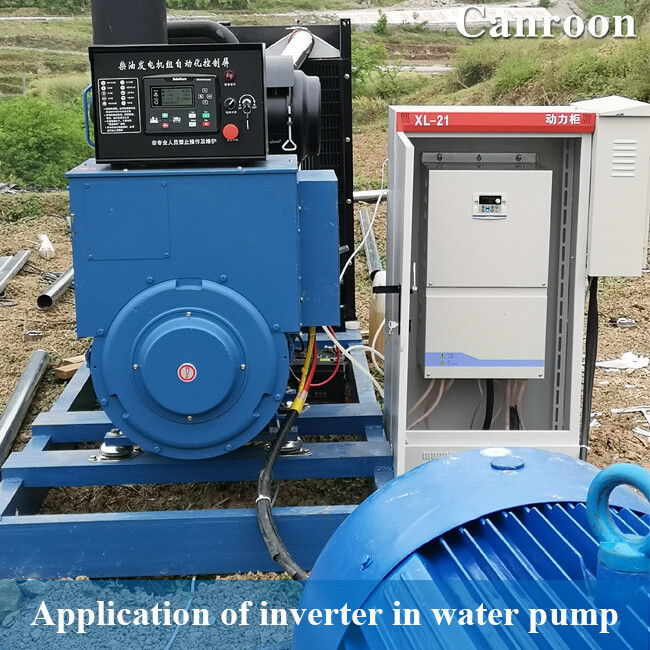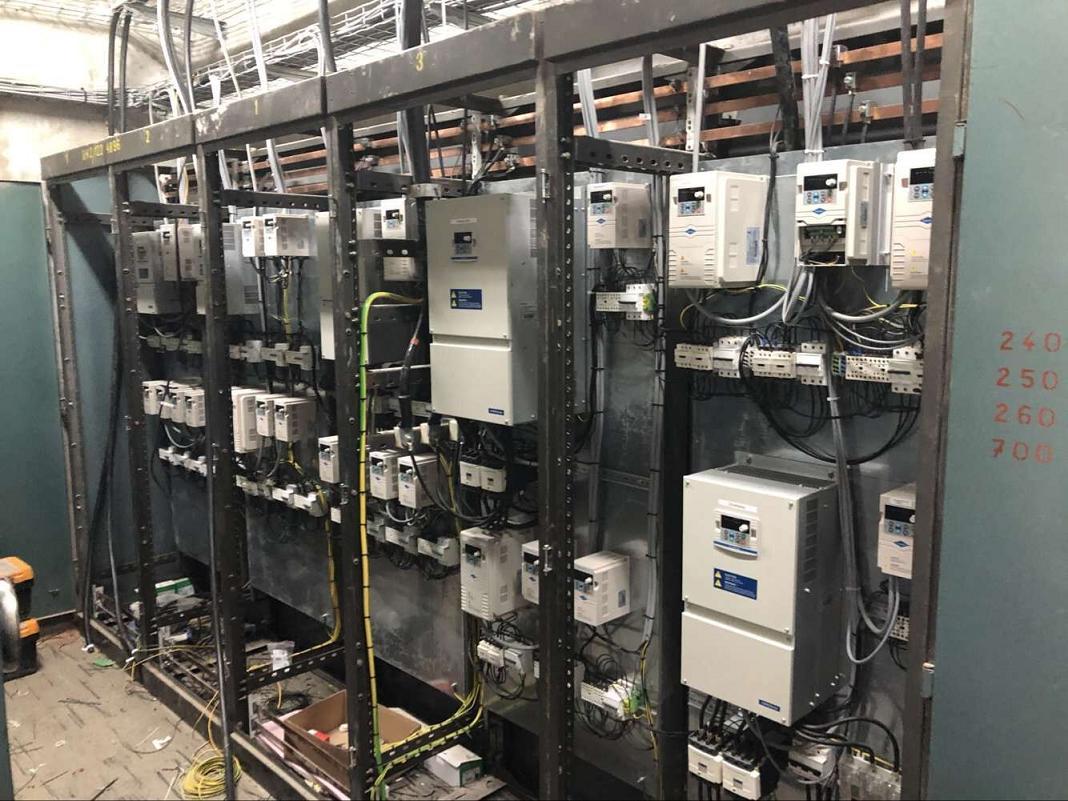
A 10 hp variable frequency drive plays a vital role in controlling motor speed and torque. It adjusts motor speed by altering the power frequency, enabling precise performance. This technology significantly enhances system efficiency across industries. For instance:
Motors consume 70% of manufacturing energy in the U.S., offering vast savings potential.
Reducing motor speed by 30% can cut energy use by 66%, thanks to the cubic power-speed relationship.
Canroon Frequency Drive Inverter models, like the Canroon CV900G Vfd, deliver these benefits effectively. Their ability to align motor output with varying load demands reduces energy waste and operational costs. This makes them essential for optimizing HVAC systems, pumps, and fans.

Key Takeaways
A 10 hp variable frequency drive (VFD) can save energy by 40%. This helps businesses save a lot of money.
A VFD lets you control motor speed exactly. This makes equipment last longer by lowering damage.
Installing a VFD correctly and keeping it maintained is important. This ensures it works well and lasts a long time.

Understanding the 10 hp Variable Frequency Drive
Key components of a 10 hp VFD
A 10 hp variable frequency drive consists of several essential components that work together to control motor speed and torque. The rectifier is the first stage, converting incoming AC power into DC power. This DC power then flows into the DC bus, which stabilizes the voltage and stores energy. Next, the inverter takes over, converting the DC power back into AC power at the desired frequency and voltage. This process allows precise motor speed control.
Another critical component is the control unit, often referred to as the brain of the VFD. It processes input signals, such as speed or torque requirements, and adjusts the inverter's output accordingly. Additionally, the cooling system ensures the VFD operates within safe temperature limits, preventing overheating. Together, these components make the 10 hp VFD a reliable motor controller for various applications.
How a variable frequency drive controls motor speed and torque
A variable frequency drive achieves motor speed control by varying the frequency and voltage of the power supplied to the motor. When the frequency increases, the motor spins faster; when it decreases, the motor slows down. This flexibility allows the VFD to match the motor's speed and torque to the specific demands of the application.
For instance, during startup, the VFD ramps up the motor speed gradually, reducing mechanical stress and preventing sudden power surges. Similarly, it can ramp down the speed smoothly during shutdown. This precise control not only improves efficiency but also extends the lifespan of the electric motor. In fact, studies show that VFDs can reduce energy consumption by up to 40% compared to traditional direct-on-line systems. This makes them an excellent choice for applications like fans, pumps, and compressors, which account for the majority of VFD usage worldwide.
Why 10 hp is a popular power rating for VFDs
The 10 hp rating strikes a perfect balance between power and versatility, making it one of the most popular choices for variable frequency drives. It is powerful enough to handle demanding industrial tasks, yet compact and efficient for commercial applications. This power rating is ideal for equipment like pumps, fans, and conveyors, which often require moderate but consistent motor speed control.
Additionally, a 10 hp VFD offers significant energy savings without the high upfront costs associated with larger drives. Its size and capacity make it a practical solution for small to medium-sized operations. Whether it's optimizing an HVAC system or improving the performance of a frequency inverter in a manufacturing setup, the 10 hp VFD delivers reliable and efficient results.

Applications of a 10 hp Variable Frequency Drive
Using a 10 hp VFD for pumps
Pumps are one of the most common applications of vfds, and for good reason. A 10 hp variable frequency drive can significantly improve the efficiency and performance of pump systems. By adjusting the motor speed to match the flow requirements, the vfd eliminates unnecessary energy consumption. For example, in water supply systems, the demand for water often fluctuates throughout the day. Instead of running the pump at full speed all the time, the vfd adjusts the speed based on real-time demand. This not only saves energy but also reduces wear and tear on the pump.
Another advantage is the ability to prevent water hammer, a common issue in pumping systems. Water hammer occurs when there’s a sudden change in flow, causing pressure surges that can damage pipes and equipment. A vfd gradually ramps up or down the pump speed, ensuring smooth operation and protecting the system. Whether it’s for irrigation, wastewater treatment, or industrial processes, a 10 hp vfd is a game-changer for pump applications.
Enhancing fan performance with a variable frequency drive
Fans play a crucial role in ventilation, cooling, and air circulation systems. However, running fans at a constant speed can lead to inefficiencies, especially when the airflow demand varies. This is where a vfd comes in. By controlling the motor speed, the vfd allows the fan to operate at the optimal speed for the required airflow. This not only improves energy efficiency but also enhances the overall performance of the system.
For instance, in HVAC systems, a 10 hp variable frequency drive can adjust the fan speed based on the temperature or occupancy of a building. When fewer people are present, the system can reduce airflow, saving energy without compromising comfort. Additionally, vfds help minimize noise levels by preventing fans from running at unnecessarily high speeds. This makes them ideal for applications in offices, hospitals, and other noise-sensitive environments.
Other applications: Compressors, conveyors, and HVAC systems
The versatility of a 10 hp vfd extends beyond pumps and fans. Compressors, conveyors, and HVAC systems are other common applications where vfds shine. In compressors, a vfd adjusts the motor speed to match the required pressure, reducing energy waste and extending the equipment’s lifespan. This is particularly beneficial in industries like manufacturing and food processing, where compressed air is essential.
Conveyors also benefit greatly from vfds. By controlling the speed of the conveyor belt, a vfd ensures smooth and precise material handling. This is especially useful in assembly lines, packaging, and logistics operations, where accuracy and efficiency are critical.
In HVAC systems, vfds optimize the performance of both fans and pumps, ensuring consistent temperature and airflow control. They also help reduce energy costs, which is a major concern for large commercial buildings. With their ability to adapt to varying load demands, vfds have become an indispensable tool in modern HVAC systems.
Tip: When selecting a vfd for any application, it’s important to consider factors like motor compatibility, load requirements, and environmental conditions. This ensures optimal performance and longevity.
Benefits of a 10 hp VFD
Energy efficiency and cost savings
A 10 hp VFD is a game-changer when it comes to energy efficiency. By adjusting motor speed to match the actual load, it prevents unnecessary energy consumption. For example, in systems like pumps or fans, the VFD ensures the motor operates only as fast as needed. This reduces energy waste and lowers electricity bills. Studies show that using a frequency inverter can cut energy costs by up to 40%. That’s a significant saving for both industrial and commercial setups.
Another advantage is the reduction in peak energy demand. Traditional systems often run motors at full speed, even when it’s not required. A VFD eliminates this inefficiency, helping businesses save money while improving system efficiency. Over time, these savings can offset the initial investment in the VFD, making it a cost-effective solution.
Extended equipment lifespan through reduced wear and tear
Running an electric motor at full speed all the time can cause unnecessary wear and tear. A 10 hp VFD solves this problem by providing smooth motor speed control. It gradually ramps up the motor during startup and slows it down during shutdown. This reduces mechanical stress and prevents sudden power surges.
The controlled operation also minimizes overheating, which is a common issue in traditional systems. By maintaining optimal conditions, the VFD extends the lifespan of motors, pumps, and other connected equipment. Businesses benefit from fewer breakdowns and lower maintenance costs, ensuring long-term reliability.
Improved control and operational flexibility
A 10 hp VFD offers unmatched control over motor operations. It allows users to adjust motor speed and torque with precision, making it a versatile motor controller. Whether it’s a pump, fan, or conveyor, the VFD adapts to varying load demands effortlessly. This flexibility enhances performance across different applications.
For instance, in HVAC systems, the VFD can adjust airflow based on temperature changes. In manufacturing, it ensures conveyor belts move at the right speed for accurate material handling. The ability to fine-tune operations not only boosts efficiency but also improves overall productivity. With a 10 hp VFD, businesses gain the flexibility to optimize their processes like never before.
Installation and Maintenance of a 10 hp VFD
Key considerations for installing a variable frequency drive
Installing a 10 hp VFD requires careful planning to ensure optimal performance. One of the first steps is documenting the parameter settings of any old VFD being replaced. This simplifies the setup process for the new unit and ensures consistency in operation. Environmental factors also play a big role. Dust, humidity, and extreme temperatures can affect the VFD's performance. Placing the unit in a clean, well-ventilated area helps protect it from these conditions.
Another important consideration is wiring. Proper connections between the VFD and the motor are essential for safe and efficient operation. Incorrect wiring can lead to performance issues or even damage the equipment. Lastly, always follow the manufacturer’s guidelines during installation. These instructions are tailored to the specific model and help avoid common pitfalls.
Routine maintenance tips for optimal performance
Routine maintenance keeps a VFD running smoothly and extends its lifespan. Start by inspecting the cooling system regularly. Dust and debris can clog vents and fans, causing the unit to overheat. Cleaning these components ensures proper airflow. Also, check for loose connections in the wiring. Vibrations during operation can loosen screws and terminals over time.
Monitoring the VFD’s performance is another key step. Look for unusual noises, vibrations, or error codes. These can indicate potential issues that need attention. Keeping a maintenance log helps track inspections and repairs, making it easier to spot recurring problems. Preventive care like this minimizes downtime and ensures reliable operation.
Troubleshooting common VFD issues
Even with proper care, VFDs can encounter problems. One common issue is overheating. This often results from blocked cooling systems or operating the VFD in a high-temperature environment. Cleaning the vents and ensuring adequate ventilation usually resolves this. Another frequent problem is motor instability, which can occur if the VFD’s parameters are not set correctly. Double-checking and adjusting these settings often fixes the issue.
Power supply fluctuations can also cause the VFD to trip or shut down unexpectedly. Installing surge protectors or voltage stabilizers helps prevent this. If problems persist, consulting the manufacturer’s troubleshooting guide or seeking professional assistance is recommended. Addressing issues promptly ensures the VFD continues to perform at its best.
A 10 hp variable frequency drive offers precise motor control, energy savings, and versatility across applications like pumps, fans, and HVAC systems. Its ability to reduce wear and improve efficiency makes it indispensable. Canroon’s 10 hp VFD stands out for its reliability and performance, making it a trusted solution for industrial and commercial needs.
FAQ
What is the lifespan of a 10 hp VFD?
A well-maintained 10 hp VFD can last 10-15 years. Regular cleaning, proper ventilation, and timely inspections help extend its lifespan.
Can a 10 hp VFD work with any motor?
Not all motors are compatible. Ensure the motor's specifications match the VFD's requirements. Check voltage, current, and frequency ratings before installation.
How does a VFD save energy?
A VFD adjusts motor speed to match load demands. This reduces unnecessary energy use, especially in variable-load applications like pumps and fans.
Tip: Always consult the user manual for compatibility and maintenance guidelines.
Sign up for updates
